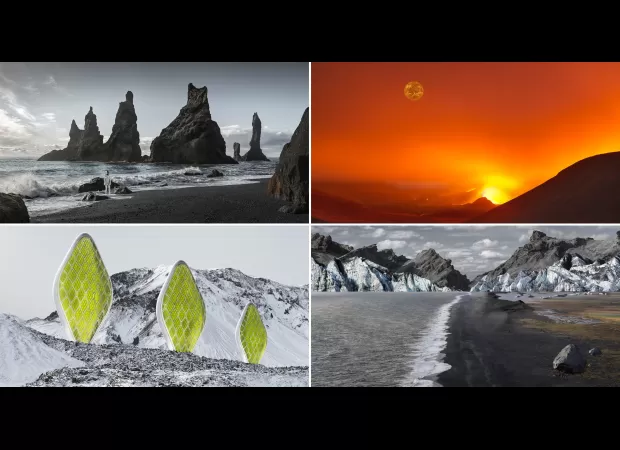Images show potential future after climate disaster reaches its tipping point.
Michael Najjar's acclaimed works explore the current and potential effects of climate change.

Photographer Michael Najjar has created a vision of what our planet could look like if global climate change isn't addressed. His acclaimed 'Cool Earth' project is a thought-provoking outlook of the future, based on his travels to extreme locations and the images he has captured along the way.
Najjar believes one of the reasons why the Earth is continuing on its trajectory towards a planetary collapse is the climate crisis is viewed as a 'hyperobject' - an entity too complex for human understanding. He has used this concept to realise the different impacts that climate change will have on our planet in scenes that link back to our current existence, and to the technology that may be used to sustain life.
The United Nations Intergovernmental Panel on Climate Change has reported that millions of people are already feeling the effects of increased rainfall, rising sea levels, melting glaciers, and more frequent extreme weather. The German photographer has imagined a future where the tipping points in the biophysical margins supporting the Earth have been passed, leading to irreversible change.
Najjar's work includes images of ice-free Arctic seas and rising oceans, artificial rainfall and floating wind turbines, and a raging volcano. He captures the idea of humanity being wiped out by a climate apocalypse in 'Posthuman Waves', and Dubai's Burj Khalifa being the centre of an imagined application of artificial rain in 'Electric Rainfall'. The 'Cool Earth' images also depict the Svalbard Global Seed Vault, a real facility located around 1,000km from the North Pole, and a huge glacier wall collapsing above a tiny figure in a dinghy.
Najjar's work links the current climate disaster to a decarbonised, post-fossil world where only technology can support life. He believes that if the nine planetary boundaries in the Earth's system - climate change, stratospheric ozone depletion, biodiversity loss, chemical pollution, acidification of oceans, consumption of freshwater, land use and nitrogen and phosphorous pollution - are exceeded, we will enter a high-risk area of irreversible change.
Najjar is hoping his work will inspire people to combine scientific understanding of the bio-physical limits of the Earth with transformative and sustainable technologies. He believes this is the only way to reach the 'saving shore' and avoid a catastrophic and chaotic future. His 'Cool Earth' project was recently displayed at the Ars Electronica Festival 2023 in Austria, where it was seen by over 88,000 people.






